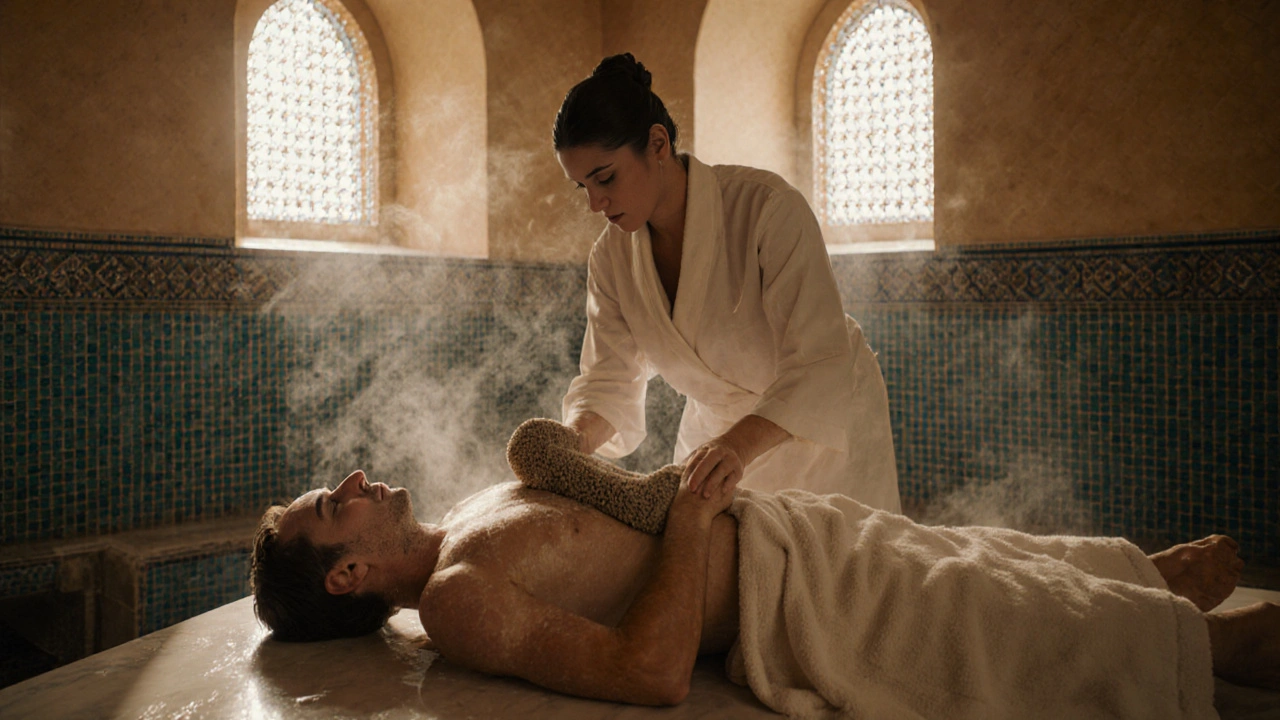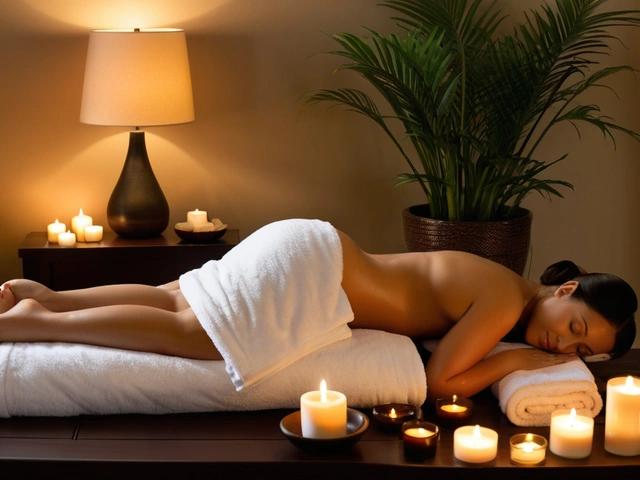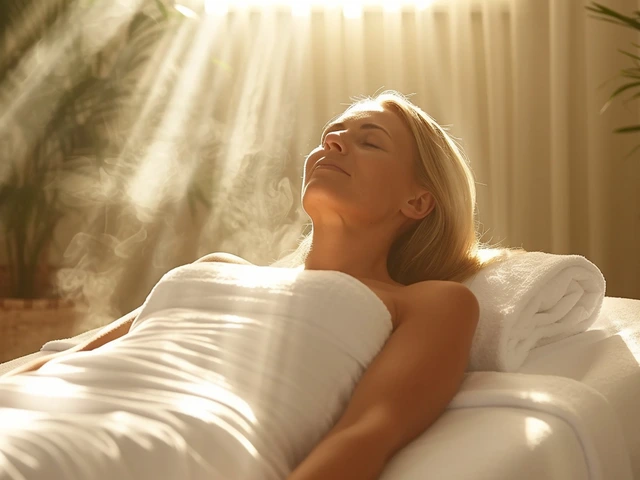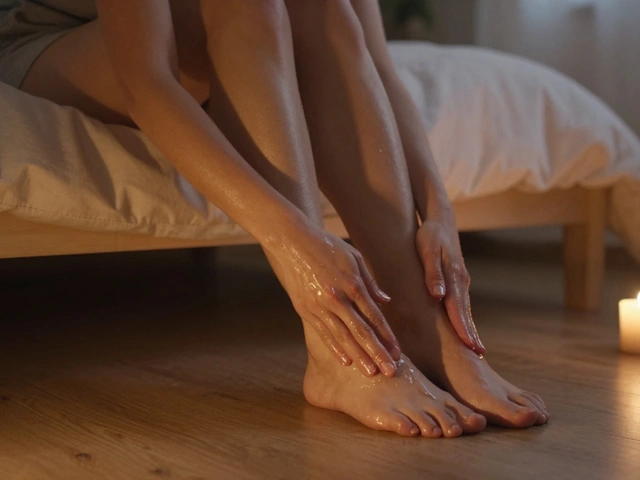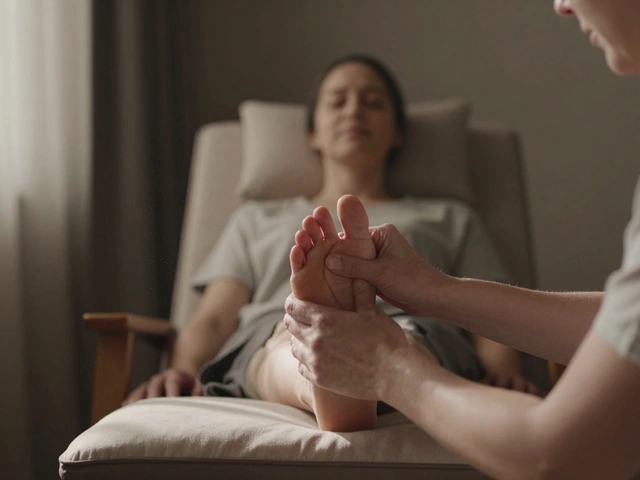Hammam Duration Calculator
Optimize Your Hammam Experience
The hammam is more than just a steam bath—it's a ritual with layers of heat and cleansing that can transform your body and mind. This calculator helps you determine the optimal duration and frequency based on your specific needs.
Your Personalized Recommendation
Your recommended hammam experience:
Key Benefits
- Improved circulation and muscle relaxation
- Deeper cleansing of pores and skin
- Reduced stress and mental clarity
Most people think a spa day means a massage, a facial, and maybe a soak in a hot tub. But if you’ve never stepped into a hammam, you haven’t truly experienced relaxation. This isn’t just another luxury treatment-it’s a centuries-old ritual that cleanses your body, calms your mind, and reconnects you with your breath in a way no modern spa can replicate.
What Exactly Is a Hammam?
A hammam, also called a Turkish bath, isn’t just a steam room. It’s a full-body cleansing experience rooted in Roman, Byzantine, and Islamic traditions. Originating in the Middle East and North Africa, hammams were once community centers where people gathered to wash, socialize, and heal. Today, they’re found from Istanbul to Marrakech, and even in wellness centers across Perth, Sydney, and London.
The structure is simple but powerful: a sequence of rooms with rising temperatures. You start in a warm room to open your pores, move to a hotter room to sweat deeply, then finish in a cooler space to reset. The whole process takes 60 to 90 minutes. No phones. No distractions. Just heat, steam, and skilled attendants who scrub you with a coarse mitt and rinse you with warm water.
Why It Feels Different From a Sauna or Steam Room
Saunas use dry heat. Steam rooms are humid but static. A hammam is both-wet and hot, with layers of heat that build slowly. The humidity is high, around 80-100%, and the air is thick with the scent of eucalyptus, black soap, or rosewater. The walls are usually marble or tile, heated from within, so you’re warmed from the ground up. You don’t just feel hot-you feel enveloped.
And then there’s the scrub. A kese, a rough glove made of woven cotton or horsehair, is used to exfoliate your skin. It’s not gentle. It’s firm, rhythmic, and surprisingly therapeutic. The attendant moves in smooth, circular motions, removing dead skin, dirt, and even the stress you didn’t know you were holding. Afterward, your skin feels newborn-soft, smooth, and glowing.
Studies show that regular steam exposure improves circulation and helps reduce muscle tension. One 2022 study in the Journal of Thermal Biology found that participants who underwent weekly hammam sessions reported a 34% drop in perceived stress levels after just four weeks. That’s not placebo. That’s physiology.
The Ritual: Step by Step
Here’s how a real hammam session unfolds:
- You arrive barefoot, wrapped in a thin cotton towel. You’re given a pair of disposable slippers and a larger towel to use during the session.
- You enter the warm room (around 35°C) and sit or lie on a heated marble slab. You breathe slowly. Let the heat sink in. This takes 10-15 minutes.
- You move to the hot room (45-50°C). Here, the steam is thick. You might pour water over the hot stones to create bursts of mist. Stay for 15-20 minutes. Sweat pours off you. Your muscles loosen.
- The attendant calls you over. You lie on a warm marble platform. They apply a thick, black soap made from olive oil and eucalyptus. Then comes the scrub-firm, thorough, and oddly satisfying. They work from your shoulders down to your feet.
- You’re rinsed with warm water from a jug or a spout. No showerhead. Just pure, flowing water.
- You’re wrapped in a fresh towel and given a cup of mint tea. You rest in the cooling room. No rush. No agenda. Just quiet.
That’s it. No creams. No masks. No machines. Just heat, water, and human touch.
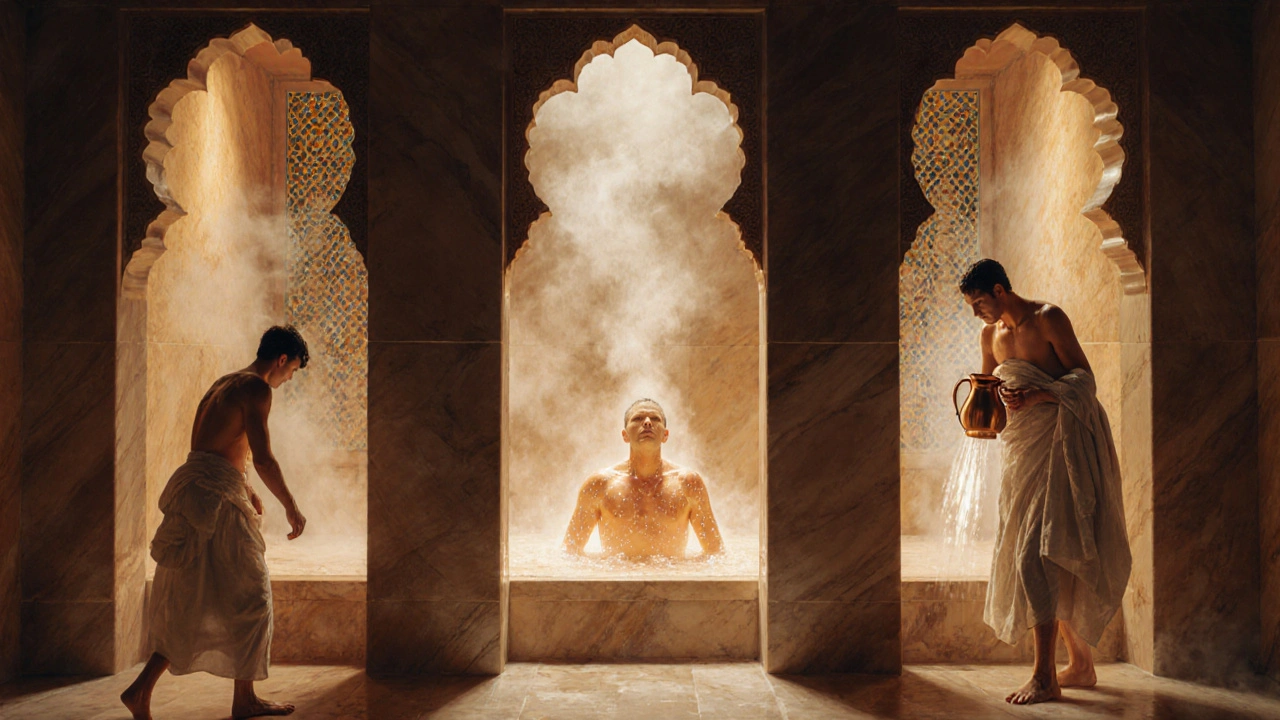
Who Benefits Most From a Hammam?
Not everyone finds it comfortable at first. If you’re sensitive to heat, claustrophobic, or have heart conditions, talk to a doctor before trying it. But for most people, the benefits are clear:
- For tight muscles: The heat and scrubbing release knots better than any deep tissue massage.
- For dull skin: Dead skin cells vanish. Acne and ingrown hairs improve with consistent use.
- For stressed minds: The ritual forces you to slow down. No screens. No talking. Just breath.
- For chronic pain: People with arthritis and fibromyalgia often report reduced stiffness after regular sessions.
One woman in Perth, who suffers from rheumatoid arthritis, started going weekly after her physiotherapist suggested it. She told me, “It’s the only thing that makes my hands feel free. Not medicine. Not injections. Just steam and scrub.”
What to Expect the First Time
If this is your first hammam, expect to feel awkward. You’ll be naked under a towel. You’ll sweat more than you ever have. You might feel dizzy at first. That’s normal. The key is to go slow. Drink water before and after. Don’t rush the process.
Don’t be shy to ask for adjustments. If the scrub is too rough, say so. If the room feels too hot, sit down or step out. Good hammams encourage communication. This isn’t about enduring pain-it’s about surrender.
And don’t worry about modesty. Hammams are gender-segregated. Attendants are trained professionals, not masseuses. They treat your body with the same respect as a nurse treats a patient. There’s no sexualization. Just care.
How Often Should You Go?
Once a month is enough for maintenance. If you’re dealing with stress, muscle pain, or skin issues, once a week for a month can be transformative. After that, you’ll likely find yourself craving it-not because it’s trendy, but because your body remembers what real rest feels like.
Some people in Istanbul go daily. In Morocco, families visit together on weekends. It’s not a luxury. It’s a habit. And in our fast-paced world, maybe we all need to make it one.
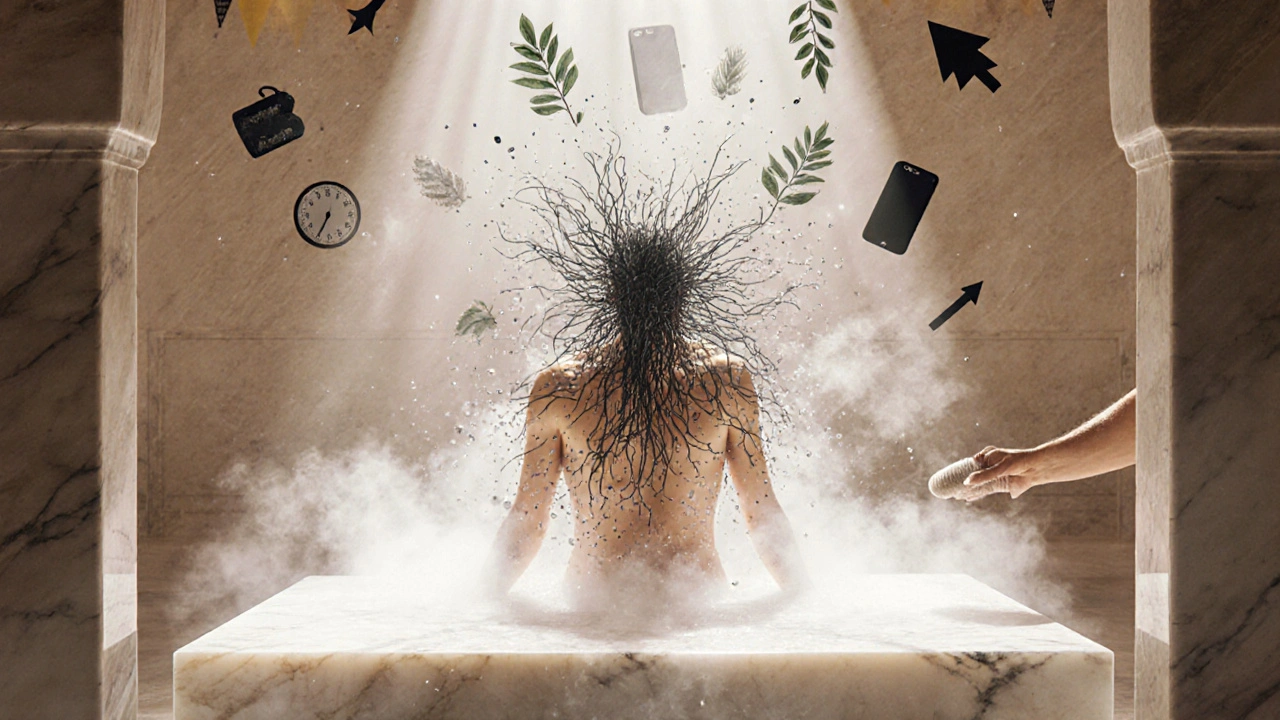
Where to Find a Real Hammam in Australia
Most hotel spas in Australia offer “hammam-style” treatments. But they’re often just a steam room with a quick scrub. For the real thing, look for places that use traditional methods: heated marble slabs, black soap, and trained attendants who follow the full sequence.
In Perth, Al-Masjid Hammam offers authentic Turkish sessions with imported soap and marble. In Melbourne, Spa Zaman runs weekly sessions led by practitioners trained in Istanbul. Sydney’s Yasmin Hammam has been running since 2018 and uses only natural ingredients.
Don’t settle for a “hammam experience” if the description doesn’t mention the scrub, the marble, or the sequence of rooms. If it’s just a sauna with a towel, it’s not a hammam.
What to Bring and How to Prepare
- Bring a towel. Most places provide one, but having your own makes you feel more at ease.
- Don’t wear jewelry. Metal gets hot. Rings and bracelets can burn or tarnish.
- Hydrate well before and after. You’ll lose a lot of fluid.
- Arrive 15 minutes early. Use the restroom. Take a quick rinse under the shower.
- Wear nothing underneath your towel. You’ll be scrubbed completely bare.
- Bring a change of clothes. You’ll want to feel clean and dry after.
And leave your phone in the locker. Seriously. This isn’t a photo op. It’s a reset.
The Real Gift of the Hammam
The hammam doesn’t promise glowing skin or weight loss. It doesn’t sell you a product. It gives you time. Time to be still. Time to be held. Time to let go of the noise.
In a world that tells you to do more, to push harder, to optimize every second, the hammam says: rest. Sweat. Be cleaned. Be cared for. Let someone else take care of you for an hour.
That’s not spa culture. That’s human culture. And it’s still alive.
Is a hammam the same as a sauna?
No. A sauna uses dry heat, usually between 70°C and 100°C, with low humidity. A hammam uses moist, radiant heat in a sequence of rooms, rarely exceeding 50°C. The key difference is the wet scrub and the ritual pacing-hammams focus on cleansing and relaxation, not just sweating.
Can I go to a hammam if I have sensitive skin?
Yes, but tell the attendant beforehand. Many hammams offer gentle scrubs or skip the exfoliation entirely. The black soap used is usually made from olive oil and is non-irritating. If you have eczema or rosacea, ask for a fragrance-free option. Most places can adjust the treatment.
Do I need to book in advance?
Always. Authentic hammams run on a timed schedule. Sessions are private or semi-private, and slots fill up fast-especially on weekends. Book at least 24 hours ahead, and if you’re traveling, reserve a week in advance.
How much does a hammam cost in Australia?
Prices range from $70 to $150, depending on location and whether extras like massage or herbal tea are included. The most authentic sessions-those with trained attendants and traditional materials-tend to be on the higher end. Don’t go for the cheapest option if it skips the scrub or uses synthetic soaps.
Is it safe during pregnancy?
Many pregnant women find hammams soothing, especially in the second trimester. But avoid the hottest room and limit your time to 15-20 minutes. Always check with your doctor first. Some hammams offer prenatal sessions with lower temperatures and no scrubbing.
What should I do after my hammam?
Rest. Drink water. Avoid cold showers or intense exercise for at least an hour. Your pores are open, and your body is still releasing toxins. A light snack or herbal tea helps. Many people feel deeply relaxed for hours-some even nap. Let it happen.
If you’ve ever wondered what true relaxation feels like, the hammam might be your answer. It’s not about luxury. It’s about returning to something older, slower, and deeply human.

